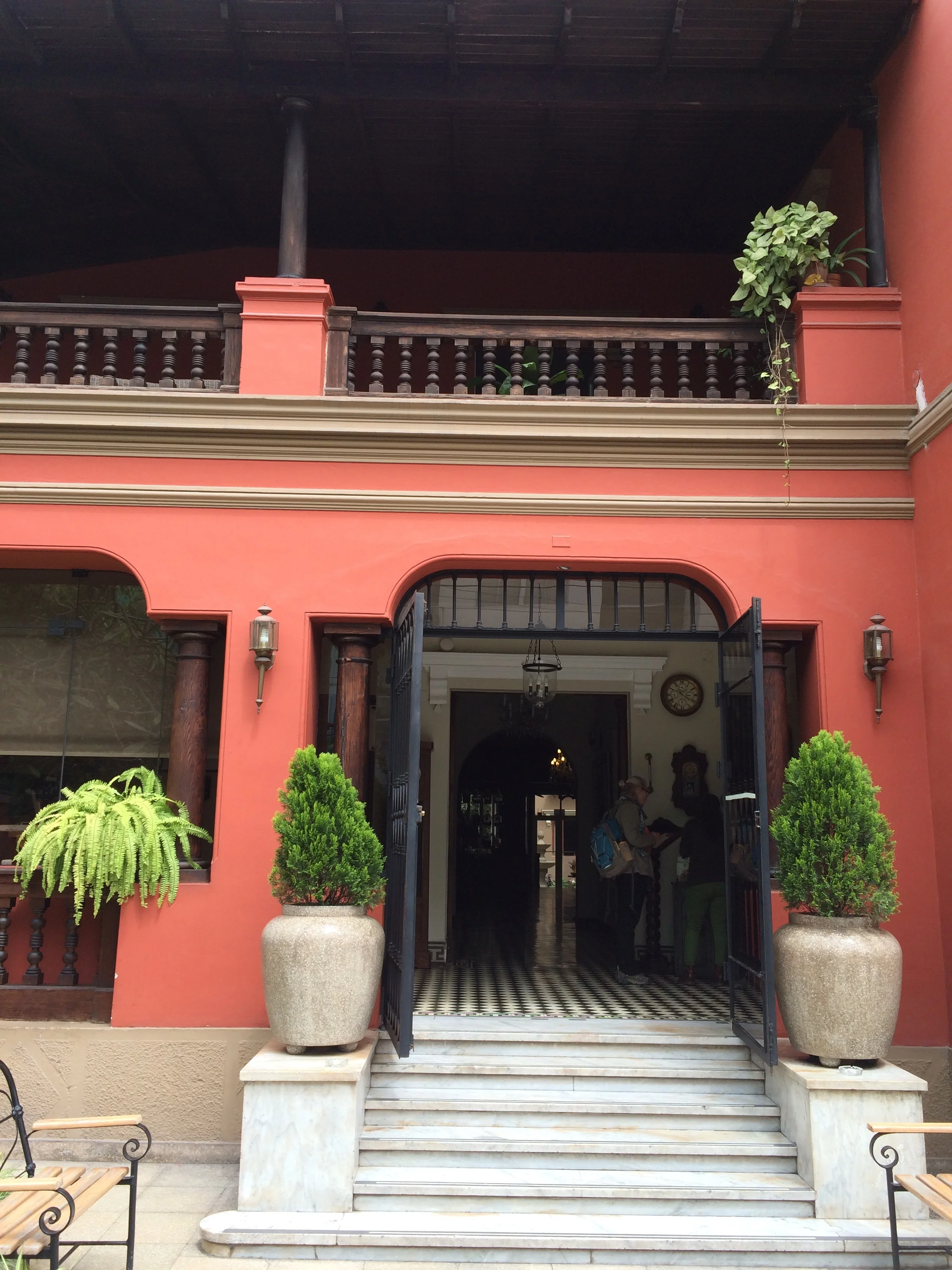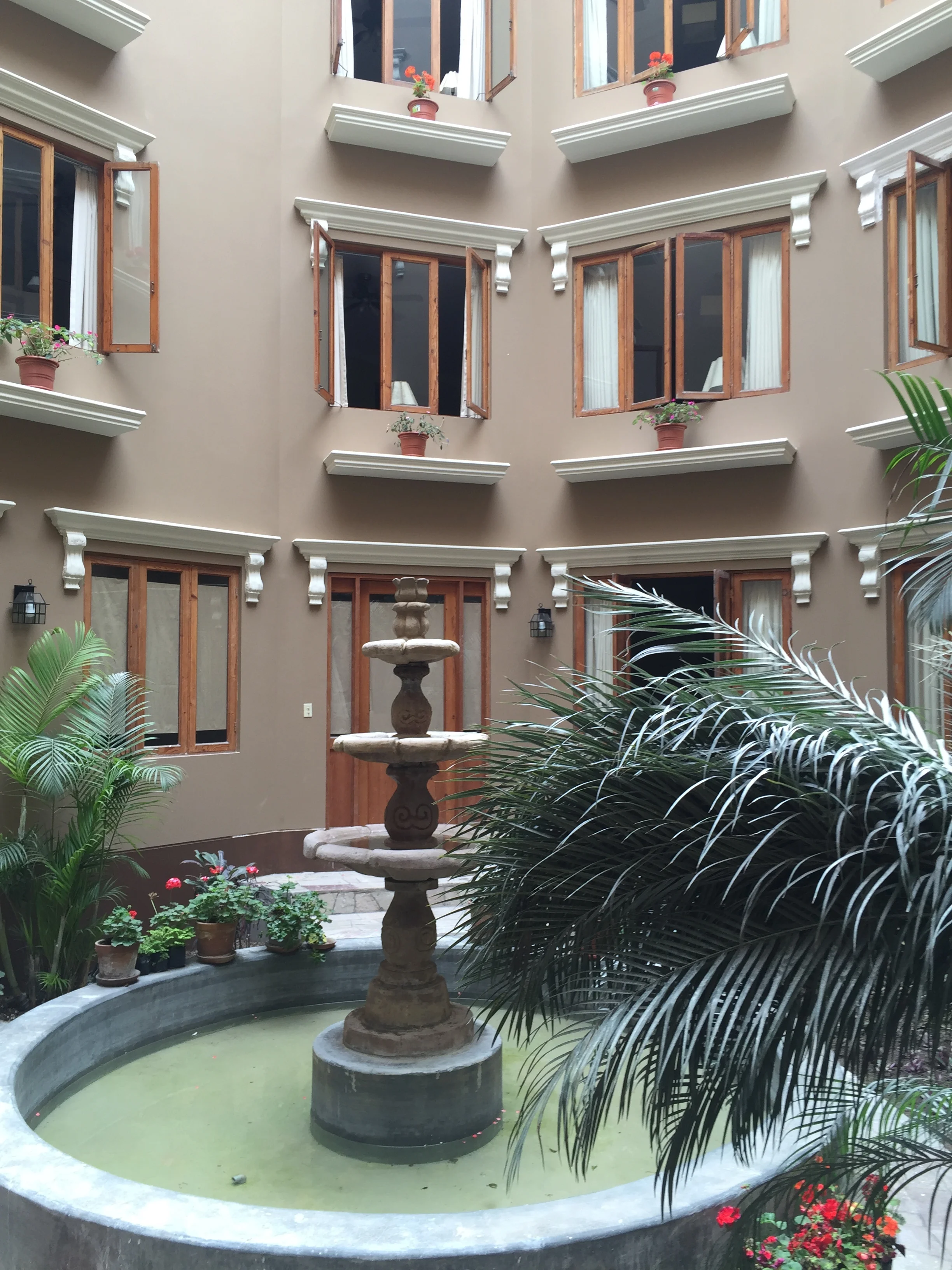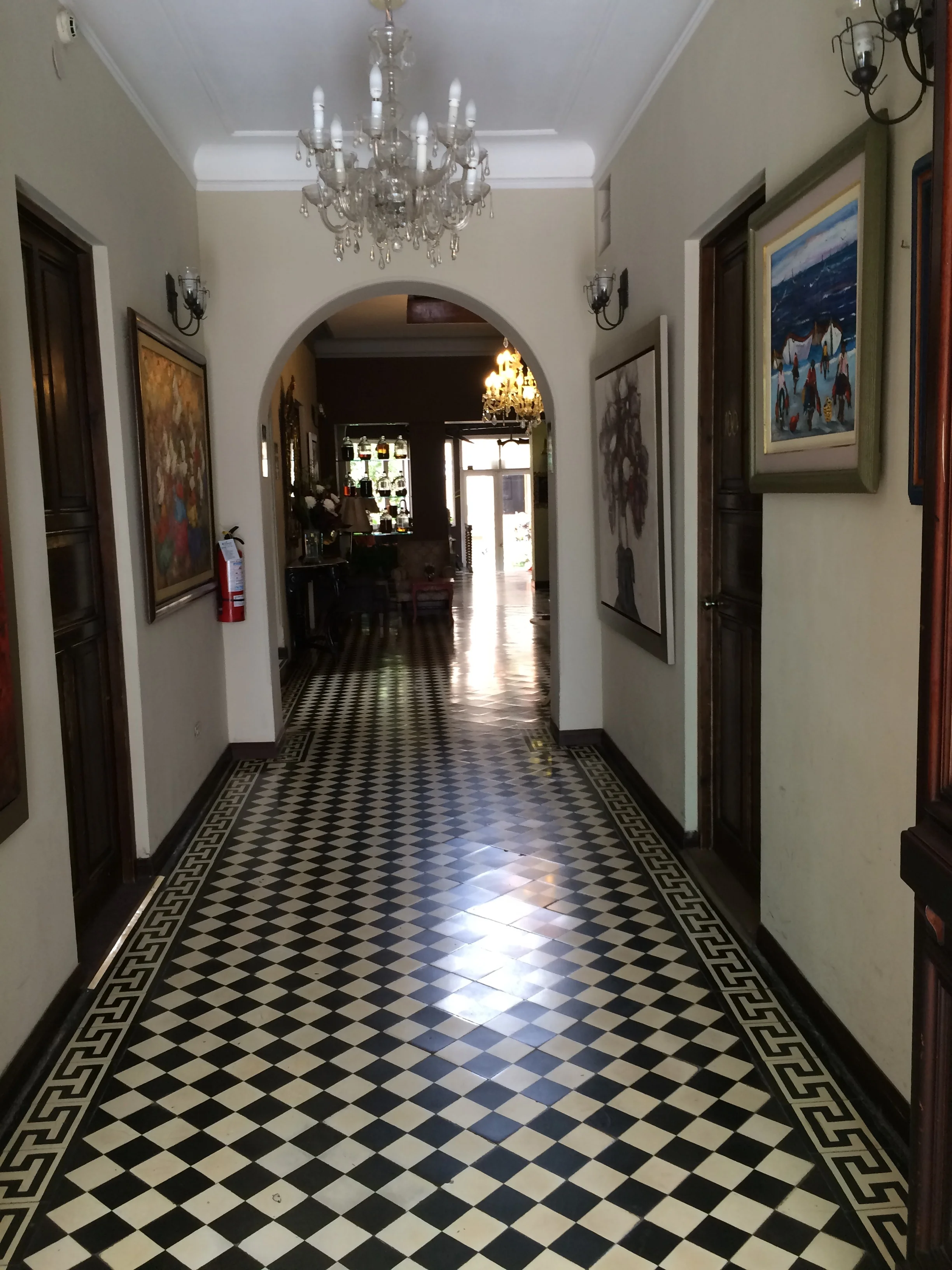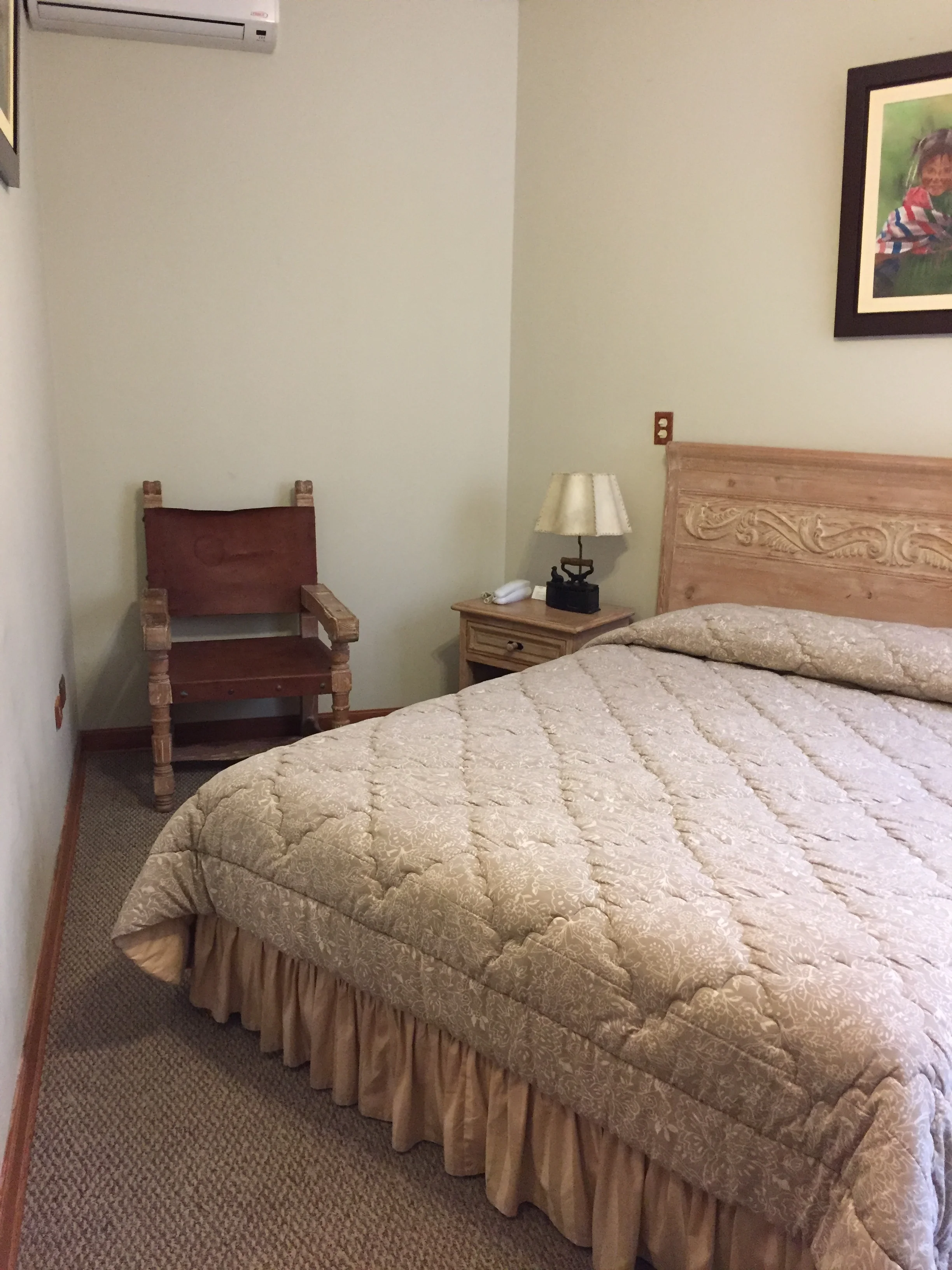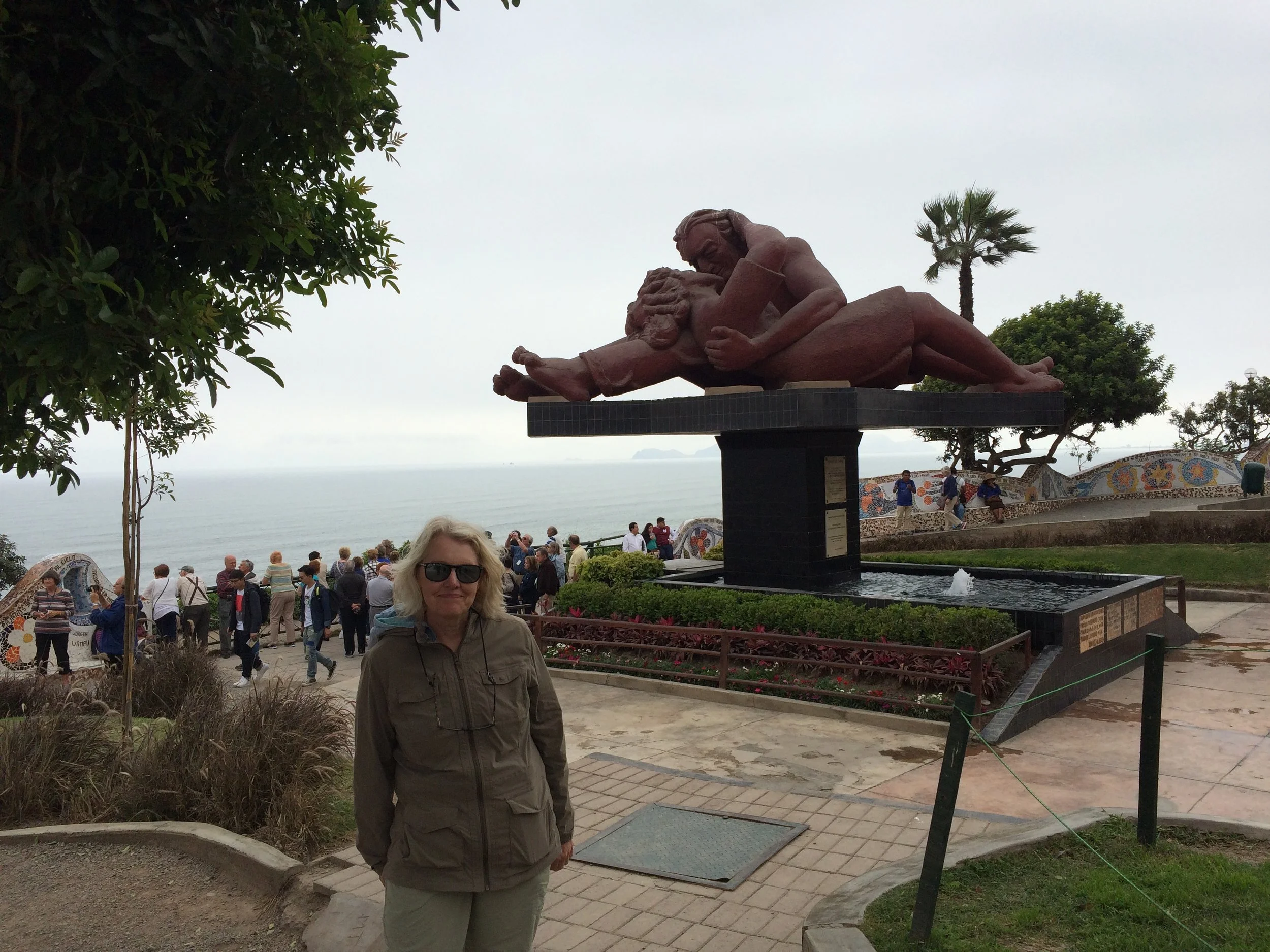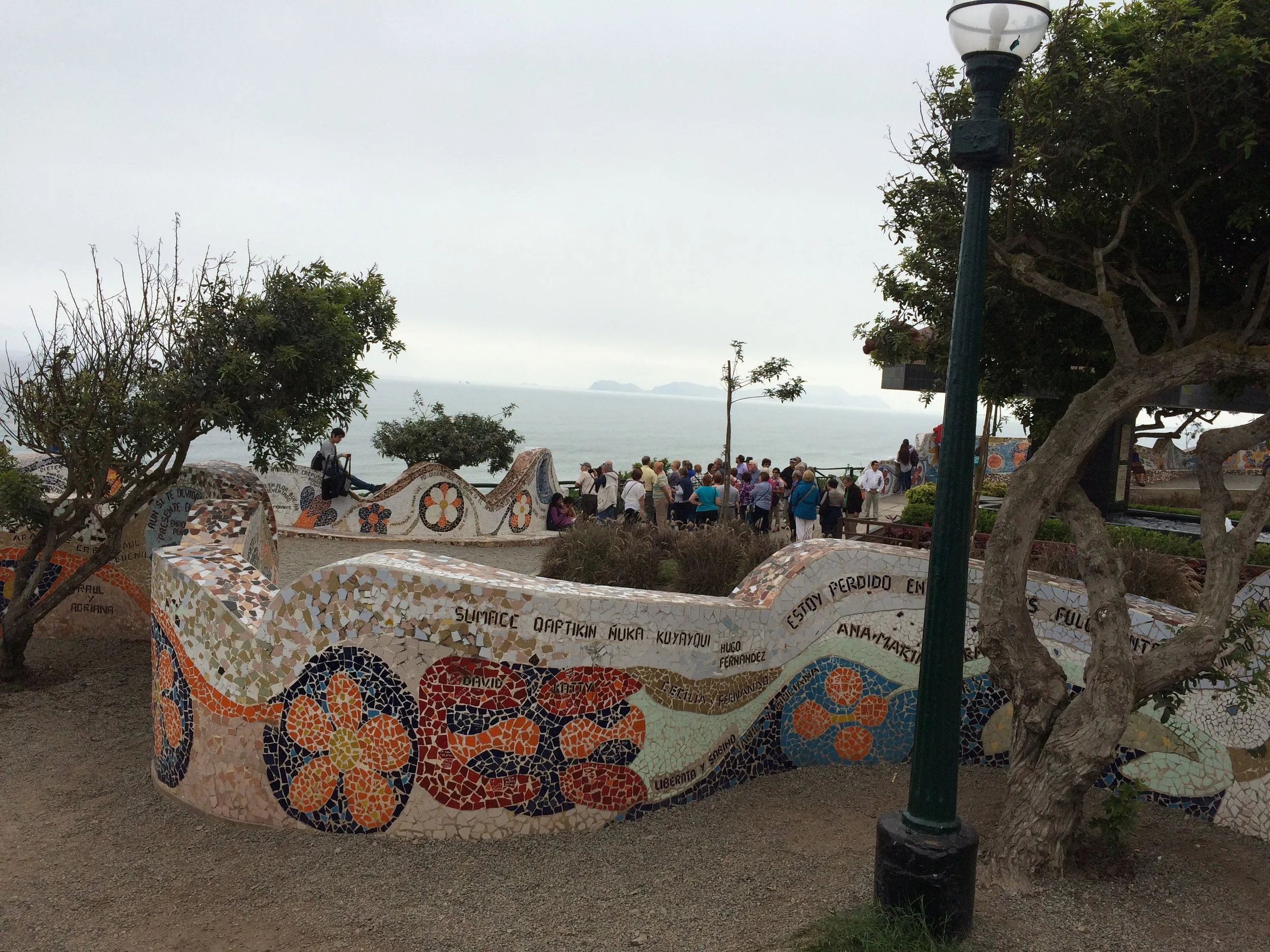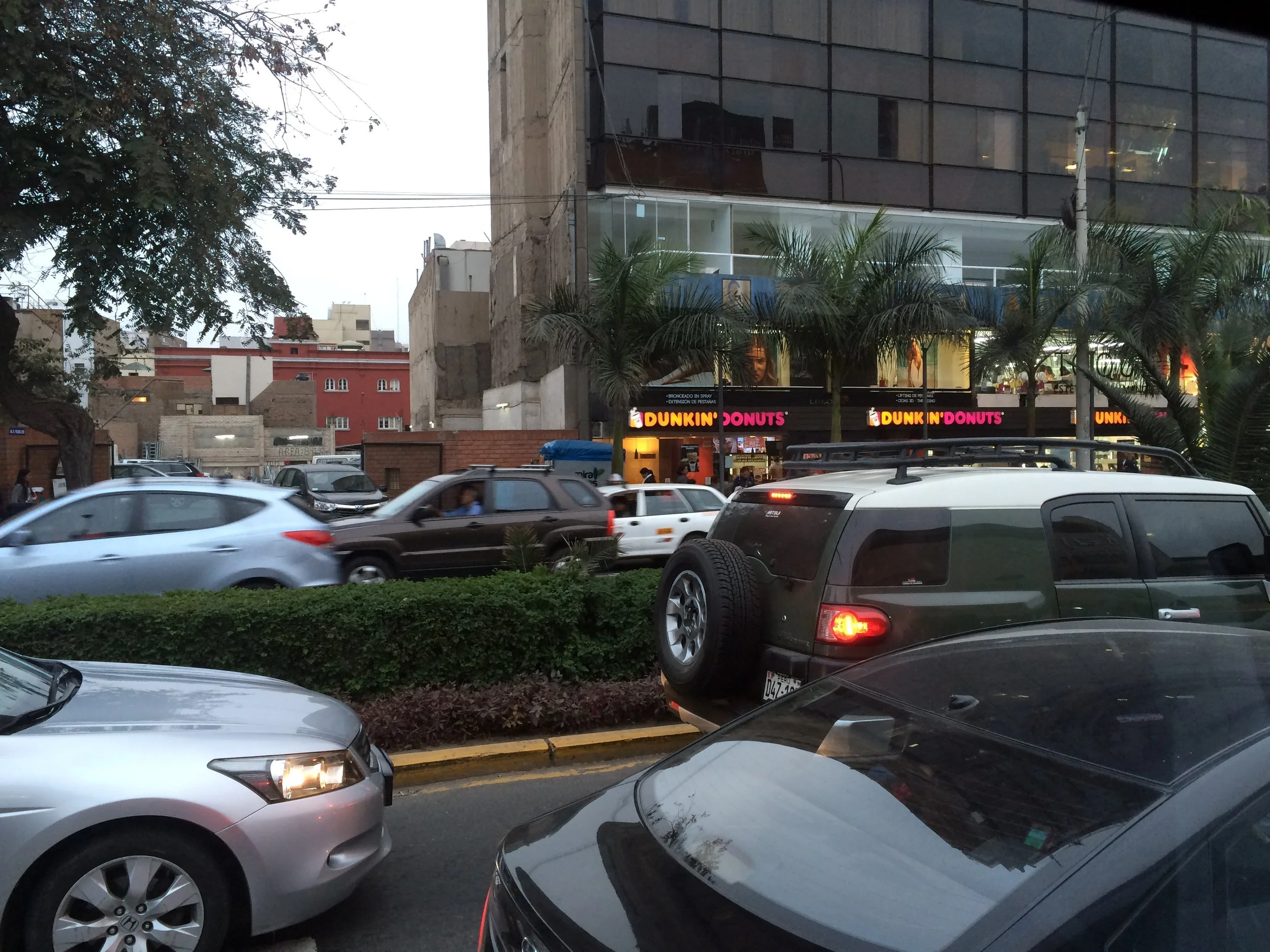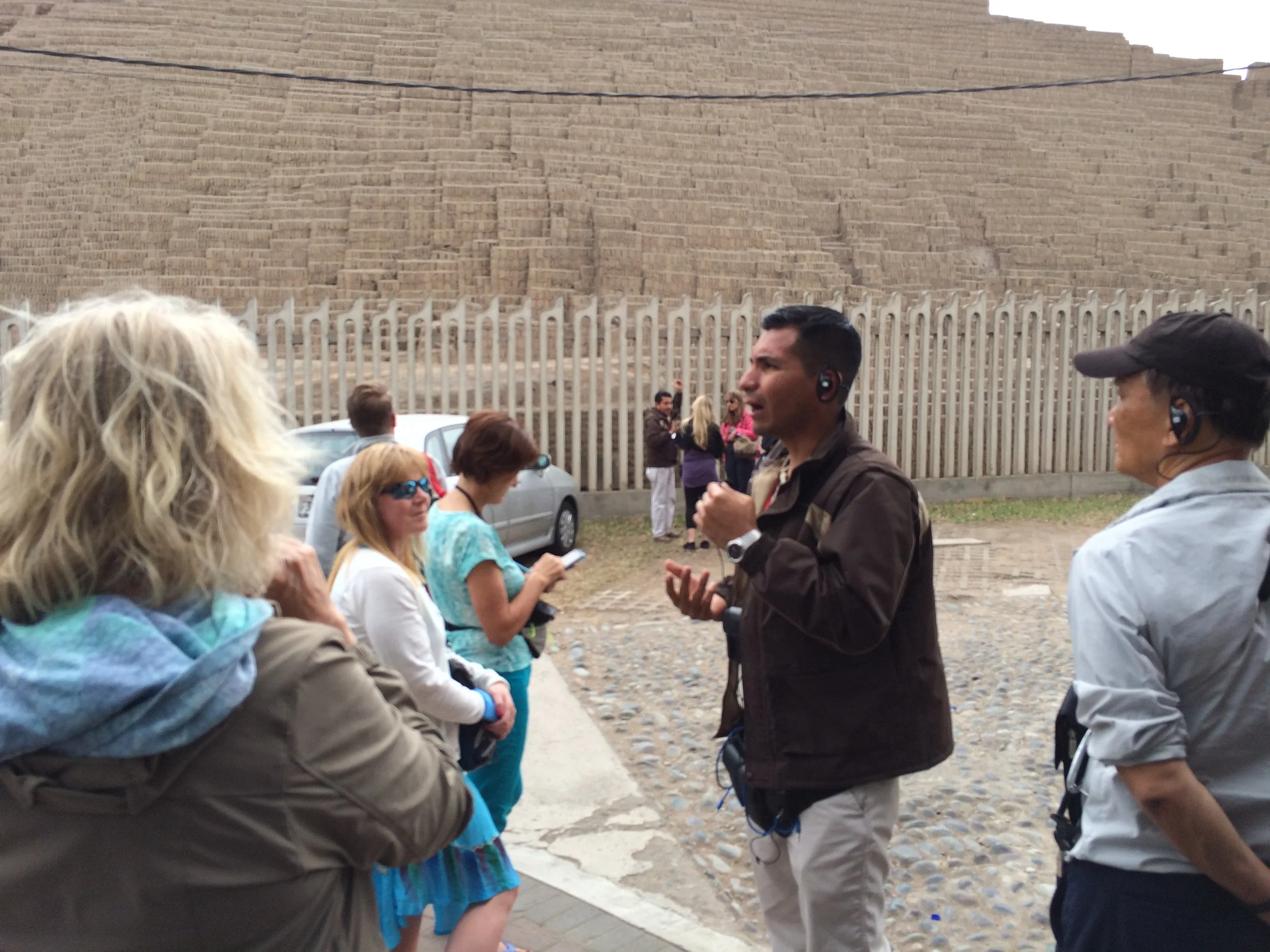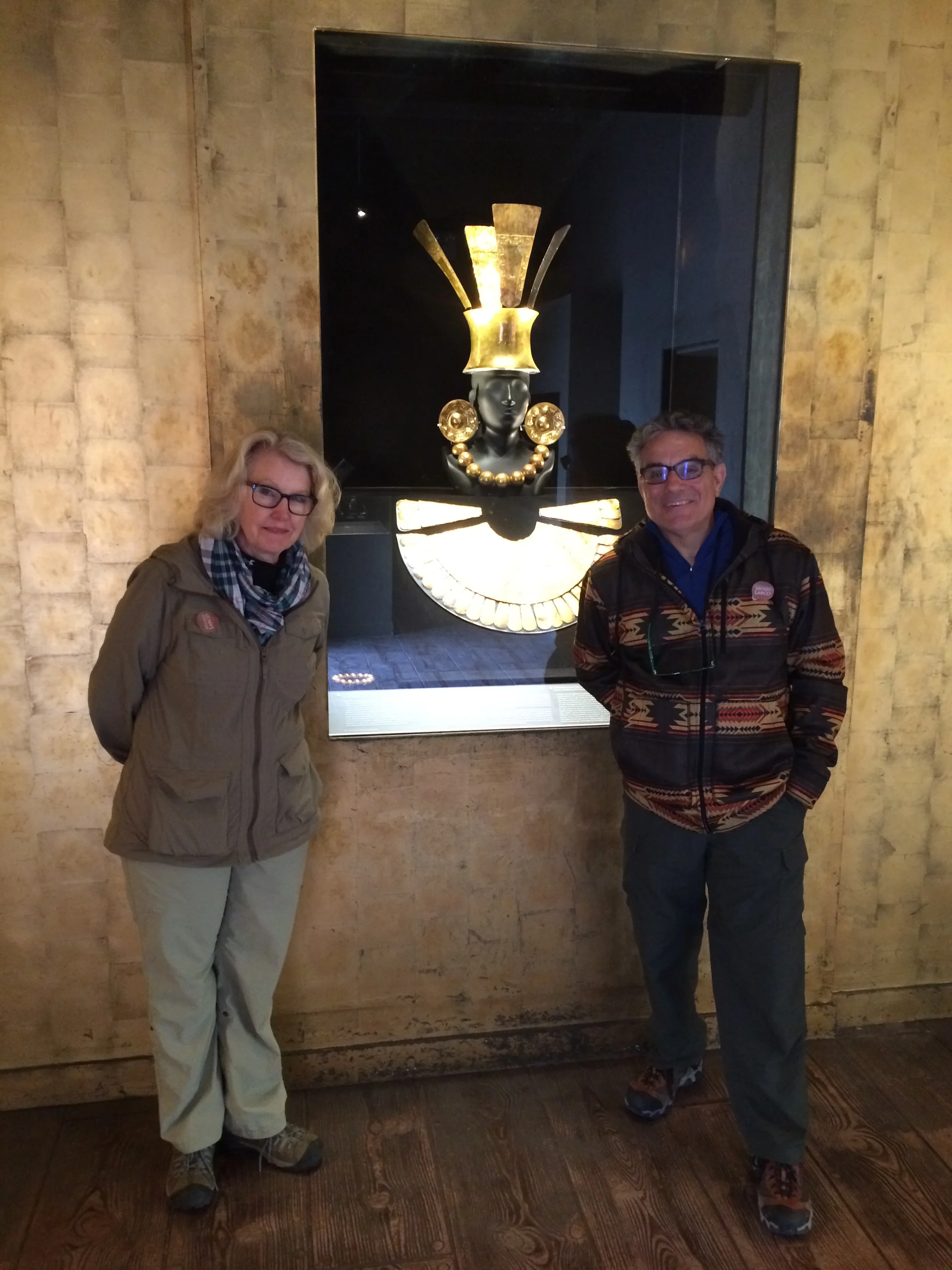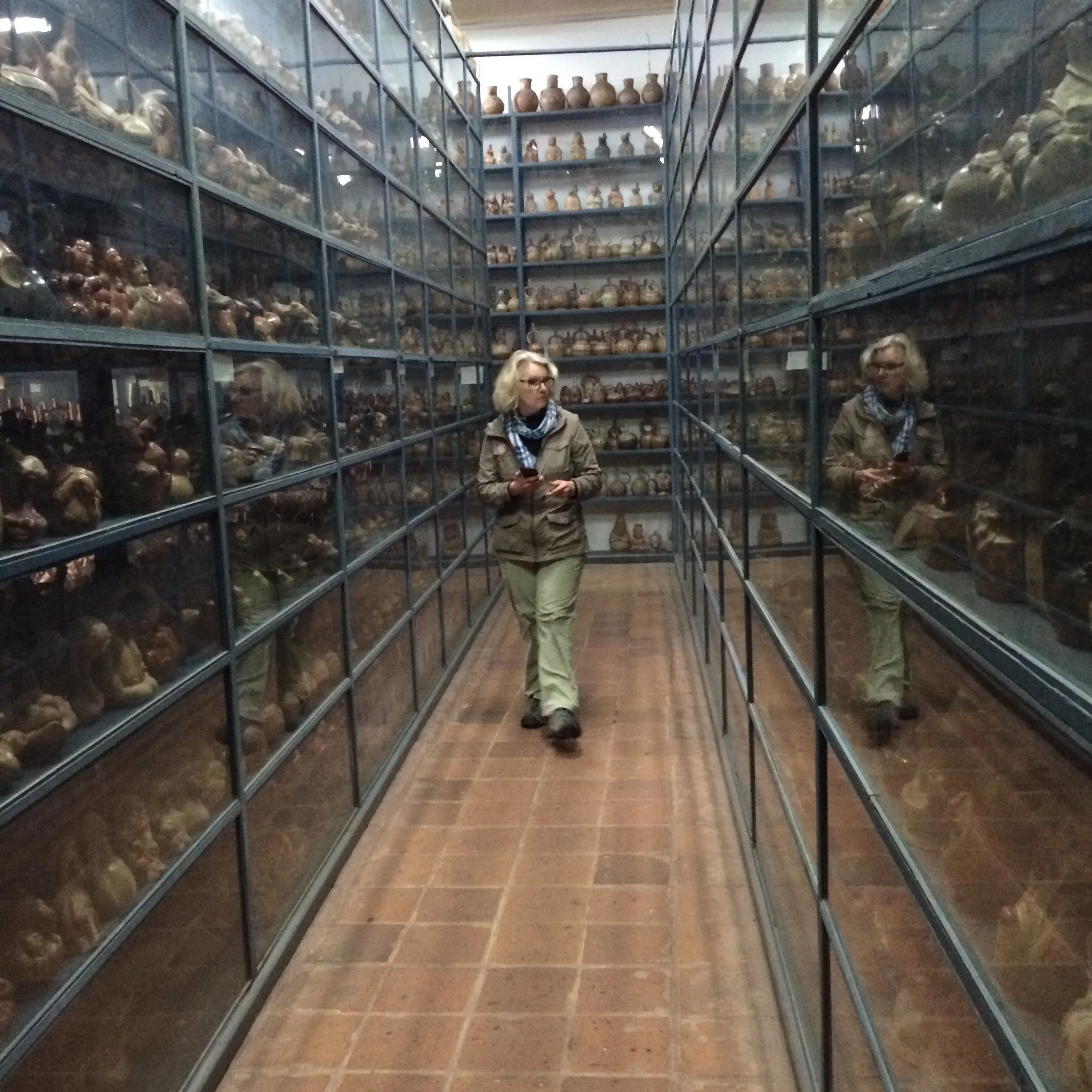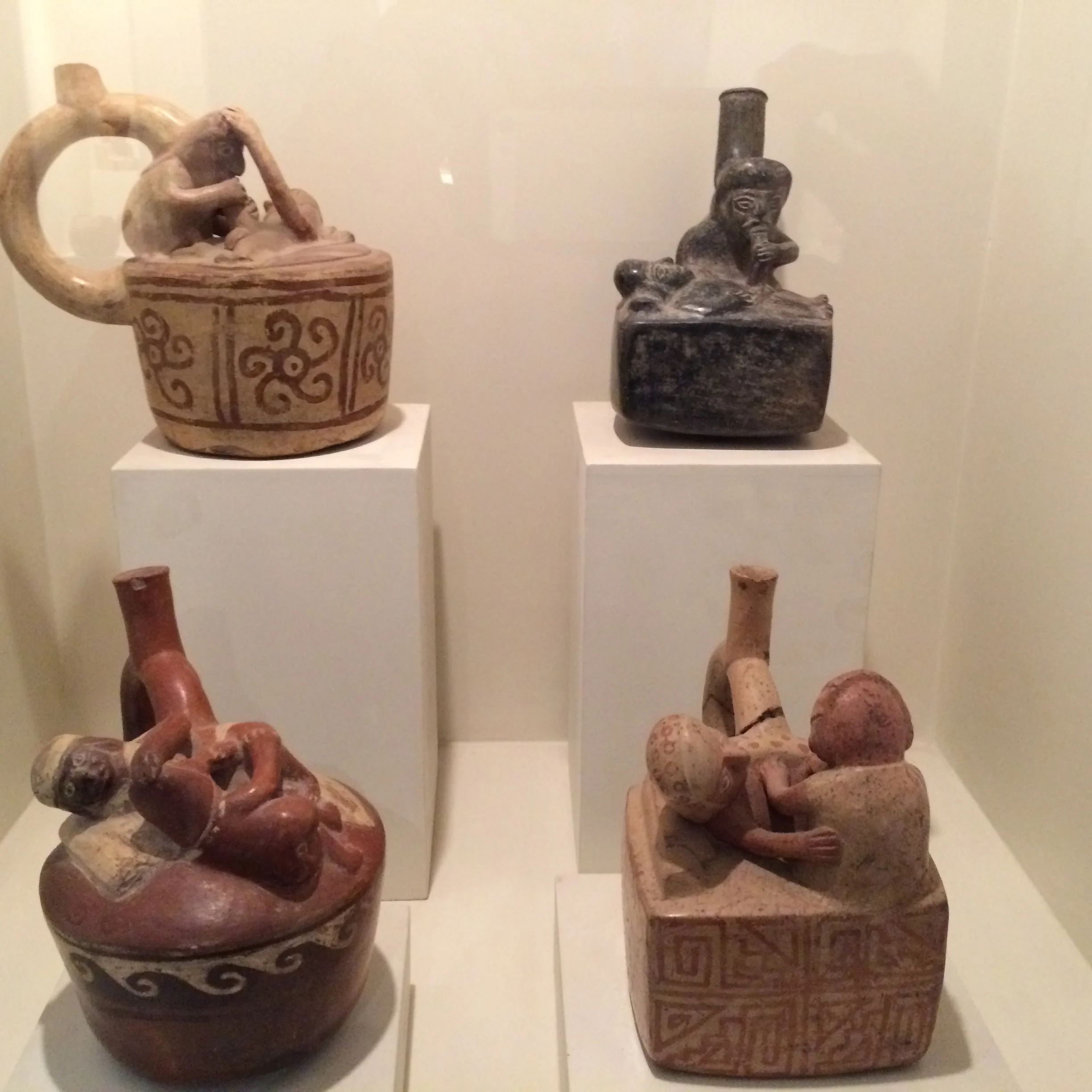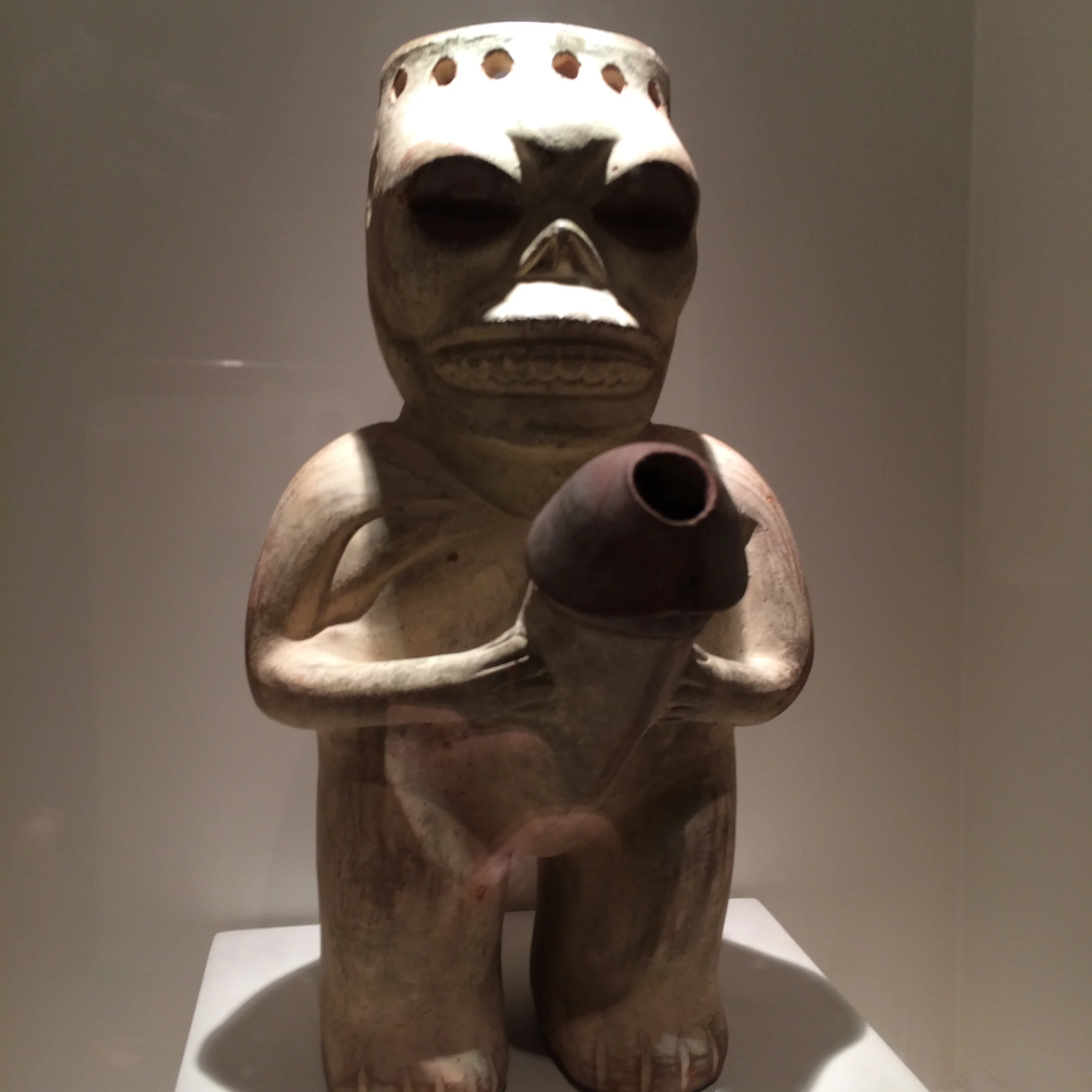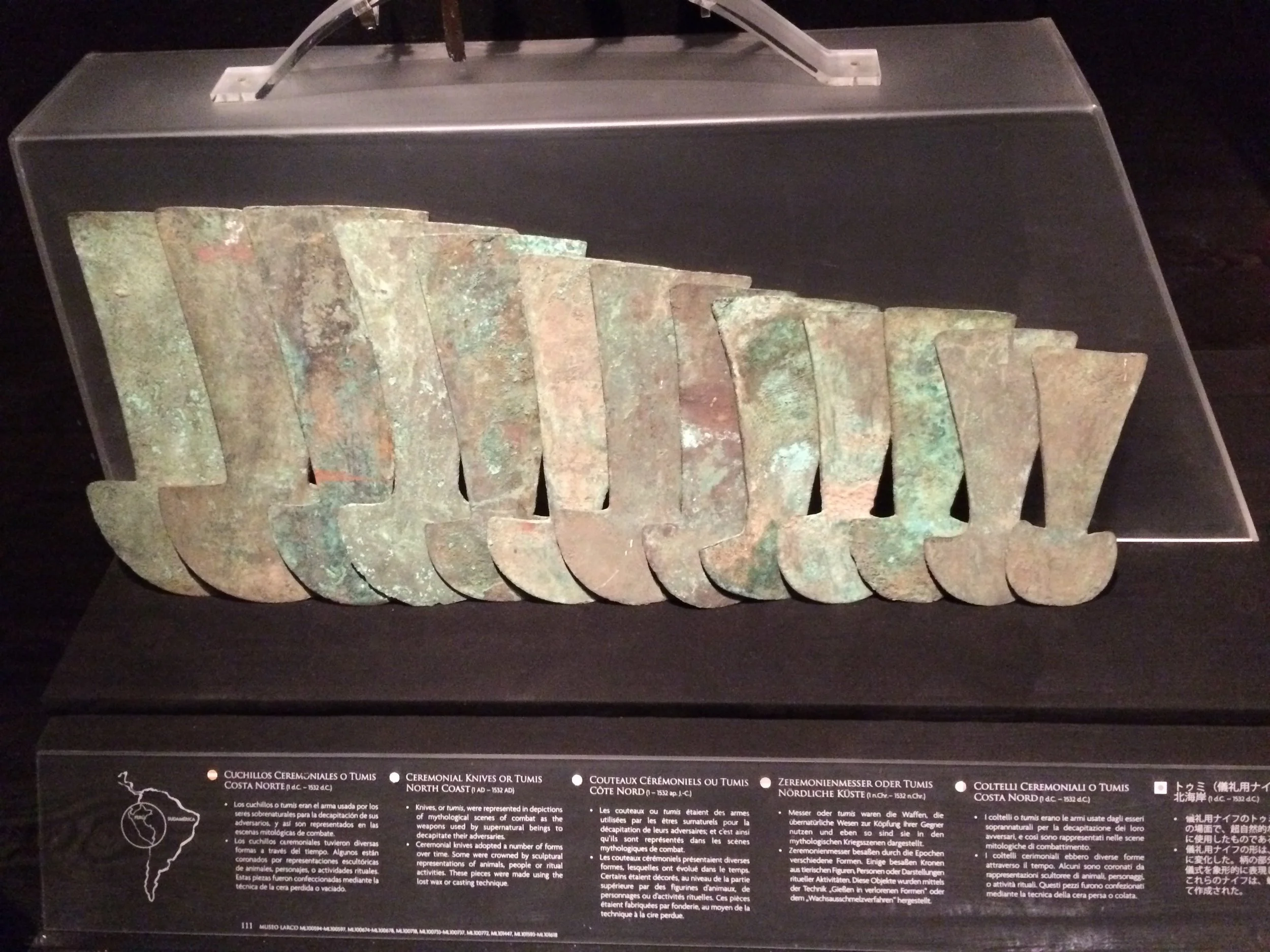I awoke at 6:30 am on the outskirts of Lima, the capital city of Peru, a/k/a City of Kings, with a population of 8 million. With the morning traffic and city sprawl it took an additional 2 hours to get to the second bus station near our destination: “Miraflores” district, by the shore line.
We grabbed our luggage, got a cab, and arrived at the Antigua Hotel. The area was great and so was the hotel —polished Spanish traditional—with very friendly staff, personal touches, a nice restaurant, parlor sitting areas and big cups of coffee. In this area, Sheratons and Hiltons are available, but the Antigua Hotel is the place for me and I am sure for Janet, too.
We walked the neighborhood until our official check in at 11:00 am; Stopped at a wonderful pastry shop for some breakfast or in my case, a sweet éclair. We later freshened up. In the afternoon we plan to take a tour of Lima’s historic city center. We wanted to avoid the We were transported by van and our guide was “Juan”. We started at “Lover’s Park” on the waterfront; a place named for the giant sculpture of a couple in an embrace (fully clothed). The park was surrounded by a wall that reflected the artist’s friendship with the famous Spanish artist and architect Goudy, who designed a park in Barcelona with the same images. We were lucky to have seen the original.
At this park we were surrounded by many customary bus tour groups. A lot of Tauck Tours, etc., etc. I think the energy level is at a different place. This exposure made me thankful and more satisfied that I went on this trip now, and did not wait. We then went to the Lima central square which is elaborate and surrounded by the St. Francis Cathedral and historic Government buildings. We traveled inside and what made the area most interesting to me was the Moorish influence in the architecture and finishes. Peru was influenced by Spain and the Moors of northern Africa had invaded Spain and set the tone. The finishes were very similar to the Alcázar of Seville, Spain (this is the land of Dorn in Game of Thrones). The buildings had elaborate 2nd,3rd and 4 storied wood balconies/bay windows affixed to stone and mason buildings. Again, the Moorish influence at the time of construction. Ladies of the Royal Court would not disclose their faces in public, so they would view the activity in the street through the cut outs in the Balconies. Apparently, if in public they would mask their faces. We were able to visit the ornate rectory and the Christian catacombs under St. Francis. There were real bones and skulls resting in certain alcoves. ( no photos allowed). One interesting point was that many of these alcoves were circular, wide, and deep for the purpose of acting as shock absorbers in case of earth quakes. We also observed Huac Puciliana, a 400AD site of an adobe pyramid built by the Lima Tribe; one of the 87 cultures.
Even with our small group the movement around the city of Lima is slow and cumbersome. This is a sprawling metropolis which uses buses for mass transit–separate express bus lanes—but still a bazillion cars weaving in and out of traffic with a constant honking. We got caught in the afternoon rush hour which begins at 4:00 and goes to 8:00 pm. We called it quits; not having enough energy for bargaining at the grand market—what fun is that.
After a little nap (many of you may have saw a photo of me sprawled out faced down—but remember I spent the entire night in a bus), we walked the close part of Miraflores neighborhood. The streets were hoping; the traffic was crazy. Our short term goal was to find this novel quick casual eatery known as “Sr. Saltado”. It is kind of like a cross between Pei Wei and Noodles & Company in the States, with a Spanish spice and flavor profile. It was a piping hot mixture of noodles, vegetables, spices and selected meats. Very good! As we walked home to the Antigua Hotel, we again stopped at the Chocolate Café to get carry-out pastries and coffee—con leche for Janet, the usual for me. This gave us time to watch CNN and the debates.
Our first "fast food" in Peru
A newspaper with the US debate coverage
Next day the front page of the newspapers covered the debate. We noticed the news stand because we decided to take the taxi (S/20) to the Cruz Del Sur autobus estacion and get tickets for our next three (3) legs locked down—Paracas, Nasca, and Cuzco; avoiding the hassle which had us using the Via bus line. We had the dates and destinations written out and the Cruz representative was a manager who was using our order as a teaching opportunity for a new employee. It was a good dialogue. FYI-Cruz Del Sur is a great Peru bus company—they also book tours—Linea is ok too.
We continued our last day in Lima; taking a taxi from Cruz to the Museum Larco, a/k/a Museo Larco. Here, our guide “Michael Angelo”-he said- walked and talked us through the art, ceramic pottery, and displays of many of the total 87 Peruvian cultures. He was quick to point out that the Incas, who spanned the period from the 1100’s to the 1400’s, had only a relatively short reigning empire of 150 years. The so-called pre-Columbian tribes existed for centuries from 1000 BC to 300 BC; where settlements and evidence of the domestication of animals has been found. Between AD 100 and 700 metal work, pottery and textiles were advanced by the Moche, a civilization that built inverted pyramids, we saw, nearly 1500 years ago near Trujillio. At this time the Nazcas sculptured their famous lines in the desert. In the next four hundred years the Chinu thrived and built the city of Chan Chan, that we visited.
This museum has a separate section displaying a collection of pre-Columbian erotic pottery. Keep the school kids at bay. This pottery is remarkably explicit. The sexual practices of Peruvian men, women, animals, and skeletons in all combinations is pretty kinky. The sexuality deals mostly with the concept of renewing the fluids that create life both in persons and in crops—at least that is what I was told. But some of those activities and positions really challenge the concept.
We left “Michael Angelo” and walked off to “Roky’s”, a broasted chicken joint with great fries and avocado salad ( I have not had a bad avocado salad yet), on our way to the second museum, Museum of the Nation. We declined a taxi and walked the 10 or so blocks.
This Museo de la Nacion also presents Peru’s many pre-historic civilizations, including the Nazca, Minoche, Chinu, and Inca that Janet and I will come across on our travels. It really is amazing what the various tribes and cultures of Peru were able to accomplish. We taxied home for another S/20, and thought we might stay in and work on the blog. This time we ate dinner at the Antigua—very nice—updated our notes and packed for our move to Paracas.
Off to Paracas
